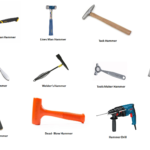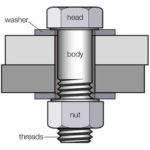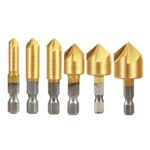What is a Magnetometer?
A magnetometer is an electrical sensor or instrument that helps measure and estimate the direction and strength or magnitude of a magnetic field in a specified area or the vicinity of the device. Also identified by the name magnetic sensor, it computes various parameters related to magnetic induction or magnetic field intensity. It can consist of their relative change.

In addition to that, the electrical instrument comes with a few particular features and functions. They make it capable of gauging the value of the magnetic dipole moment. It can do so for specific magnetic materials and constituents such as ferromagnetic substances. The device performs this operation by recording and appraising the effect of the magnetic dipole moment. It exerts it on an induced current. In this case, the latter flows or passes through a current-carrying or conducting coil of wire.
For these reasons, a magnetometer serves as an essential and crucial component in almost all types and kinds of space crafts, underwater vessels, and aircraft. It also finds extensive application in the sectors and industries of biology, agriculture, national defense, medicine, physics, chemistry, interplanetary research, aerospace, etc. In today’s time, there is almost no technological field that does not use a magnetometer.
Types of Magnetometers
What are the Different and Distinct Types and Varieties of Magnetometers?
A magnetometer can get divided and categorized into eight fundamental types depending on the circumstances of its usage. The parameters can consist of the sort or kind of computation it can perform. It also includes the conditions or instances in which the electrical instrument gets used.
The eight different and distinct types and varieties of magnetometers consist of the following:
1. Vector Magnetometers
A vector magnetometer gets used in the measurement and assessment of the vector values of a magnetic field.
It finds application in a specific discovery and study. It is of the magnetic field of the Earth. It can also do so for a few particular terms and parameters associated with it.
The parameters and factors can be the inclination angle and the declination angle. The former element forms between the horizontal or parallel surface of the Earth and the vector component or value of the magnetic field. The latter is the angle between the horizontal component or value of the same magnetic field and the true or geographic North Pole of the Earth.
2. Scalar Magnetometers
A scalar magnetometer is the opposite of a vector magnetometer. It finds the value of the strength or intensity of a vector magnetic field but not its direction. In addition, it gets acknowledged as a total field magnetometer.
3. Absolute Magnetometers
An absolute magnetometer estimates the absolute value or magnitude of a vector magnetic field. To do this function, it implements and uses a specialized system of internal calibration. It can also utilize an accepted and known physical constant value of the magnetic sensor.
4. Relative Magnetometers
A relative magnetometer measures the magnitude of a vector magnetic field. It does so while it remains in a position that is relative to a stationary and uncalibrated baseline. It finds application in the computation of the fluctuations, variations, or disparities that can arise and exist in any magnetic field. Such magnetometers also use the name of variometers.
5. Stationary Magnetometers
A stationary magnetometer estimates the value of the strength of a magnetic field. It does so while it is in a fixed or immovable state or position. The electrical instrument provides the measurements in this fastened condition.
6. Portable Magnetometers
A portable magnetometer operates in a dynamic condition, allowing the users to take the measurements when it is in motion. The device can get moved, carried, and transported from one area or location to another. It is compact enough to fit in a moving vehicle. It also goes by the name of a mobile magnetometer due to its nature.
7. Laboratory Magnetometers
As the name suggests, a laboratory magnetometer finds application in numerous types and kinds of experiments in research institutes, laboratories, and centers. It gets used to assess and gauge the intensity of the magnetic field of various magnetic materials and substances. They usually come incorporated in these electrical instruments. Typically, a laboratory magnetometer provides measurements in a stationary state.
8. Survey Magnetometers
A survey magnetometer calculates the magnitude of the intensity of a magnetic field. It finds application in and during geological and geomagnetic surveys. They can get used while they remain fixed and immobile in specified base stations. In addition to that, they can get moved and carried. It can be for the aim and intention of scanning the vicinity and location where the survey is necessary.
How Does the Use of a Magnetometer Prove Beneficial in Everyday Life?
A magnetometer is an exceedingly beneficial instrument that can get used in almost all electrical appliances and devices. It can get used in most weather and climatic conditions and situations, no matter how harsh or adverse they may be. It serves as an effortless and safe process of measuring and computing two parameters. They are the direction and strength or intensity of a magnetic field.
A magnetometer has flexible and varied usage and application. It has a broad range in which it works and performs its functions. In addition to that, it has and offers an increased sensitivity. It allows it to give results and readings that have a low level of inaccuracy.
A magnetometer gets incorporated into the appliances and devices that we use in everyday life. They enhance their overall operational capacity and capability. The electrical instrument allows them to work and function flawlessly and provide better results. It optimizes and improves the devices and appliances to let them perform their actions and duties for a long time with desired and perfect outcomes.
A magnetometer can get used in compasses, mobile phones, submarines, aircraft, and geological excavations and surveys, to list a few. It can also find application in the unearthing and discovery of oil, coal, and mineral reserves and mines that remain hidden and buried deep under the ground.








